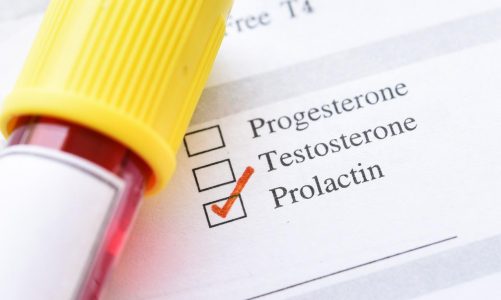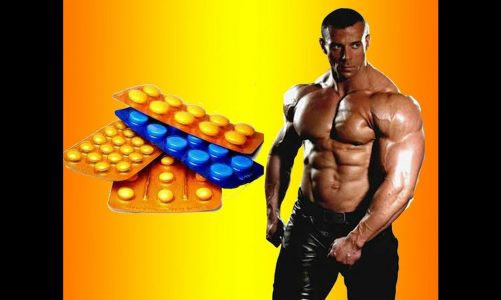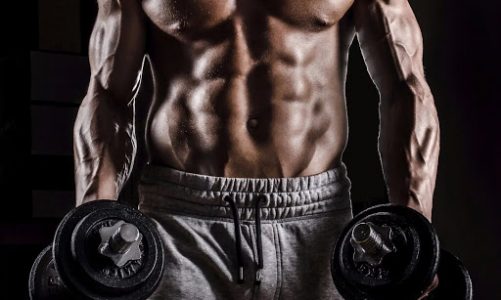I believe that the products for the association are already available, which in the coming years can and should find the same popularity as 40 years ago, which achieved this deca-dbola, and which will make it pale in terms of effectiveness. In fact, there are now many products with an anabolic strength index above 1000 with testosterone as the base of 100: all of them, in fact old AAS, never sold or soon discontinued, are now released as designer steroids (DS) on the market. prohormones. But two differ from others in their characteristics and mutual association: METRIBOLONE and OSTARINA.
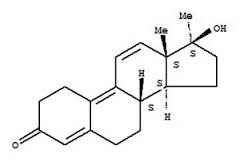 METHYLTRENBOLONE or METHYLTRIENOLONE or METRIBOLONE [ 17-beta-hydroxy-17-methylestra-4,9, 11-triene-3-one
METHYLTRENBOLONE or METHYLTRIENOLONE or METRIBOLONE [ 17-beta-hydroxy-17-methylestra-4,9, 11-triene-3-one
I believe that the products for the association are already available, which in the coming years can and should find the same popularity as 40 years ago, which achieved this deca-dbola, and which will make it pale in terms of effectiveness. In fact, there are currently many products with an anabolic strength index above 1000 with testosterone as the basis of 100: all of them, in fact, the old AAS were never sold or soon were not released, are now released as designer steroids (DS) on the market. … prohormones. But two differ from others in their characteristics and mutual association: METRIBOLONE and OSTARINA.
 METHYLTRENBOLONE or METHYLTRENOLONE or METRIBOLONE [ 17-beta-hydroxy-17-methyestra-4,9, 11- trien-3-one], an old DS, conceived by Negma in 1964 and legally used only as a product to measure the androgen receptor affinity of other AAS. Nothing else (so to speak) that methylated trenbolone in alpha position C-17 and like trenbolone does not aromatize at any dosage. In fact, it would be more correct to say that Trenbolone is metribolone clarified by methylation in alpha-C-17, in fact, trenbolone was not released to the market until 1976. But, as usual, however, 17-alpha methylation is associated not only with the ability of the molecule to pass more or less free through the liver: other modifications occur, in the particular case, an extremely strong affinity for androgen receptors and bond stability (from this point of view, this is considered the most potent AAS and therefore is used in the laboratory to determine the strength of the affinity for the AR receptors of other AAS), In addition, the affinity for androgen-binding proteins (which prevent the biological activity of AAS) is even lower than trenbolone, almost zero.
METHYLTRENBOLONE or METHYLTRENOLONE or METRIBOLONE [ 17-beta-hydroxy-17-methyestra-4,9, 11- trien-3-one], an old DS, conceived by Negma in 1964 and legally used only as a product to measure the androgen receptor affinity of other AAS. Nothing else (so to speak) that methylated trenbolone in alpha position C-17 and like trenbolone does not aromatize at any dosage. In fact, it would be more correct to say that Trenbolone is metribolone clarified by methylation in alpha-C-17, in fact, trenbolone was not released to the market until 1976. But, as usual, however, 17-alpha methylation is associated not only with the ability of the molecule to pass more or less free through the liver: other modifications occur, in the particular case, an extremely strong affinity for androgen receptors and bond stability (from this point of view, this is considered the most potent AAS and therefore is used in the laboratory to determine the strength of the affinity for the AR receptors of other AAS), In addition, the affinity for androgen-binding proteins (which prevent the biological activity of AAS) is even lower than trenbolone, almost zero.
But also the strength of the signal emitted by a molecule once bound to a receptor site is enormously enhanced, possibly due to the stability of the binding to the androgen receptor: for some time there has been talk of androgenic and anabolic strengths of 10 or 100 times. that about trenbolone (obviously empirical estimates), Julius Vida, already in 1969 in his fundamental book “Androgens and Anabolic Agents: Chemistry and Pharmacology”, claims that he measured in the laboratory an anabolic force equal to 30,000 times (this is not an oversight) and Androgenic strength is 12,000 times higher compared to methyltestosterone 100: 100 (which is 150: 130 compared to testosterone). If correct, this would mean that the molecule, mg per mg, is about 72 times more anabolic and 100 times more androgen than trenbolone. At first glance, this may sound crazy, but I have noticed results in athletes … the measurement of Jiulius Vida seems reliable to me.
Of course, we are faced with a very active AAS already at a dosage of 0.25 mg per day: the advantage of this molecule in avoiding receptor saturation, avoiding high doses, is remarkable. Regarding the alleged extreme toxicity to the liver, I have not found any empirical evidence in the blood tests of the athletes who used it: therefore, I do not believe that, mg per mg, it is significantly more toxic than any other AAS alkylated at position 17 alpha. My impression is that methyltrene’s horrific toxicity is just a legend based on the assumption that trenbolone is inherently liver and kidney toxic, which is not true as tren only exacerbates the effects of excessive protein intake. on transaminases began to circulate on the Internet, even at a dosage of 1 mg per day and only for two weeks; I strongly suspect the fraud was orchestrated by the FDA or the US DEA: this will not be the first time.
A blood test for transaminases, carried out in athletes who took double or triple doses, as well as in combination with other alkylates, did not reveal anything special. Instead, the effect of amethionine (samyr) as a potent hepatoprotector was evident. Note that tests to portray Metribolone as a true liver terror would have been performed without pathoprotection. Recently, it has proven to be particularly effective in reducing liver inflammation rates, in addition to the already known recovery of glutathione (Tad 600, Tationil), URSODOXIC ACID (Deursil).
In fact, metribolone could be a “reasonable” alternative “Hepatotoxic, given the very modest doses.
We also remember that the PH state of Metribolone does not currently exist, being the most obvious modification (removal of methylation at C-17) that would reduce it to simple trenbolone. METHYLTRENE-550 [ 7a-Methylestra-4-en-3,17-dione ] is actually the predecessor of MENT-TRESTOLONA [ 17 beta-hydroxy-7-alpha-methylestr-4-en-3-one ]. Summarizing and considering the typical characteristics of trenbolone, metribolone looks like this:
- 12,000 androgens / 30,000 anabolic versus methyltestosterone
- Strong AR, but also has the ability to establish direct agonist binding to progestogen receptors and agonist feedback to cortisol receptors;
- Not fully aromatized even if alpha is not recovered due to the double bond in C9-C10 introduced compared to nandrolone
- Hepatotoxicity is approximately the same as for other methylated C-17 in relative terms (mg x mg) or perhaps slightly higher given the intrinsic resistance of trenbolone to hepatic passage, less in absolute terms given the size of the doses. However, the potential of trenbolone can be indirectly hepatotoxic and, due to excessive protein intake and / or dehydration, must be considered and increased: enhanced liver protection is recommended.
Thus, metribolone is extremely beneficial for competitive athletes who are already taking significant doses (with receptor oversaturation problems) of anabolic substances similar to androgen receptors and especially trenbolone (from which it almost completely follows the affinity for the receptor): adding a few more mg can significantly increase the effectiveness of the protocol without significantly increasing receptor saturation.
It is safe to say that Metribolone is the most powerful anabolic agent on the market; DIMETRYLTRIENOLONE could claim it as the most powerful anabolic ever synthesized. We’ll make a specific post on this topic.
ENOBOSARM (2S) -3- (4-cyanophenoxy) -N- [4-cyano-3- (trifluoromethyl) phenyl] -2-hydroxy-2-methylpropanamide , commonly known as ostarine or also GTx-024 or MK-2866 , is a SARM (Selective Androgen Receptor Modulator). SARMs are anabolic androgenic drugs that differentiate receptor affinity based on the location of androgen receptors in tissues. AAS with a therapeutic index higher than 1 can be considered a SARM, but this name is usually reserved for next-generation anabolic molecules developed independently of the structure of testosterone and cholesterol themselves: they do not actually belong to the steroid genus.
Amarin is the only SARM that has demonstrated an almost complete dissociation between androgenic and anabolic effects, demonstrating with a pronounced and exceptional affinity for androgen receptors in muscle and bone tissue and, to a lesser extent, for adipose tissue (lipolytic effect). In the clinical experimental phase, it showed no affinity for the receptors of the prostate, clitoris, hair follicles, and internal glands. In clinical trials (however, no more than 3 mg per day is carried out), all hormonal parameters remain unchanged, with the exception of a decrease in free testosterone, which, however, is compensated by a decrease in SHBG, which completely restores the values of free testosterone.
The hemolipid values also remain unchanged. No aromatization was detected and the product is completely orally bioavailable without any liver toxicity. The complete dissociation between androgenic and anabolic effects has been confirmed empirically and by the sports community at the moment, at least up to a dose of 25 mg per day.Its mg per mg anabolic properties are not very noticeable: compared to 100 testosterone, the first estimates of androgenic effect are about 1-1.5%. Estimates for anabolic strength are still vague, but from the direct experience I have seen, I can tell that we are about 7 times more anabolic than trenbolone, so at 3 about 4000 compared to testosterone. At the moment this product has only three limitations:
- Low affinity for androgen receptors at the level of adipose tissue, which implies a cross-sectional relationship with another AR product;
- Average affinity for cortisol receptors, which may indicate a link with more active compounds from this point of view
- Slowness to “gear up”: 1 to 3 weeks; Perhaps this is due to the fact that the anabolic strength of the product may be due to the exceptional stability of the connection with the osteomuscular androgen receptors or the long-term maintenance of the signal transmitted by RNA to the cell nucleus
If we compare the two products, we will see that we have two very powerful anabolic agents that, when open, compensate for their receptor characteristics: metribolone also works where the latina is stararin. These are fat AR receptors and cortisol receptors.
– Why not just use the more powerful Metribolone? –
In addition to the cash costs, the entire Methyltrene preparation should include approximately 25 mg per day of this product in order to equalize the consumption of ostarine at 100 mg per day. Significant liver toxicity begins to occur, as well as severe effects on lipid balance and androgen-sensitive tissues. By combining Osstarin instead of Methyltren it can be kept in much more reasonable doses. Indeed, it MUST, otherwise the overlap of receptors on RA will inevitably be significant.
The only limitation of the ostarine-methyltrienolone stack would be:
- definitely lack of available AR receptors
- no anabolic agent without AR
Unfortunately, there is no particularly potent DS or PH in this area, as the prohormone market is moving towards AR and does not aromatize, as for commercial reasons (remember that all PH-DS are legally sold as supplements in Great Britain and many others in the US, therefore, in a market that tends to be less “hard for bodybuilding”), as for ease of use products that are no more than 5% smaller, AAS is already banned.
In this situation, the third possible component of this stack may be the old Oxandrolone in a “cut” or the old BOLASTERONE, possibly in prohormonal form (see the next post)
In the Peptidpräparate (Peptide) abnehmen sector instead of inhibitors I believe that myostatin will indeed begin to proliferate when products for systemic use with a reasonable active lifespan (not a few minutes) become available.
Other peptic products appear on the scene and are in full experiment.
In fact, Metribolone could be a “reasonable” hepatotoxic alternative given the very modest doses.
We also remember that Metribolone PHs do not currently exist, which is the most obvious modification (removal of methylation at C). -17) one that would reduce it to simple trenbolone. METHYLTRENE-550 [ 7a-Methylestra-4-en-3,17-dione ] is actually the predecessor of MENT-TRESTOLONA [ 17 beta-hydroxy-7-alpha-methylestr-4-en-3-one ]. Summarizing and considering the typical characteristics of trenbolone, metribolone looks like this:
- 12,000 androgen / 30,000 anabolic versus methyltestosterone
- Strong AR, but also has the ability to establish direct agonist binding to progestogen receptors and agonist feedback to cortisol receptors;
- Not fully aromatized even if alpha is not recovered due to the double bond in C9-C10 introduced compared to nandrolone
- Hepatotoxicity is approximately the same as for other methylated C-17 in relative terms (mg x mg) or perhaps slightly higher given the intrinsic resistance of trenbolone to hepatic passage, less in absolute terms given the size of the doses. However, the potential of trenbolone can be indirectly hepatotoxic and, due to excessive protein intake and / or dehydration, must be considered and increased: enhanced liver protection is recommended.
Thus, metribolone is extremely beneficial for competitive athletes who are already taking significant doses (with receptor oversaturation problems) of anabolic substances similar to androgen receptors and especially trenbolone (of which it almost completely follows an affinity for the receptor): when adding a few more mg can significantly increase the effectiveness of the protocol without significantly increasing receptor saturation.
It is safe to say that Metribolone is the most powerful anabolic agent on the market; DIMETRYLTRIENOLONE could claim it as the most powerful anabolic ever synthesized. We’ll make a specific post on this topic.
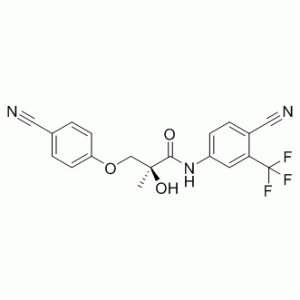 ENOBOSARM (2S) -3- (4-cyanophenoxy) -N- [4-cyano-3- (trifluoromethyl) phenyl] -2-hydroxy-2-methylpropanamide commonly known as OSTARINA or also GTx-024 or MK-2866
ENOBOSARM (2S) -3- (4-cyanophenoxy) -N- [4-cyano-3- (trifluoromethyl) phenyl] -2-hydroxy-2-methylpropanamide commonly known as OSTARINA or also GTx-024 or MK-2866
I believe that the products for the association are already available, which in the coming years can and should find the same popularity as 40 years ago, which achieved this deca-dbola, and which will make it pale in terms of effectiveness. In fact, there are currently many products with an anabolic strength index above 1000 with testosterone as the basis of 100: all of them, in fact, the old AAS were never sold or soon were not released, are now released as designer steroids (DS) on the market. … prohormones. But two differ from others in their characteristics and mutual association: METRIBOLONE and OSTARINA.
 METHYLTRENBOLONE or METHYLTRENOLONE or METRIBOLONE [ 17-beta-hydroxy-17-methyestra-4,9, 11- trien-3-one], an old DS, conceived by Negma in 1964 and legally used only as a product to measure the androgen receptor affinity of other AAS. Nothing else (so to speak) that methylated trenbolone in alpha position C-17 and like trenbolone does not aromatize at any dosage. In fact, it would be more correct to say that Trenbolone is metribolone clarified by methylation in alpha-C-17, in fact, trenbolone was not released to the market until 1976. But, as usual, however, 17-alpha methylation is associated not only with the ability of the molecule to pass more or less free through the liver: other modifications occur, in the particular case, an extremely strong affinity for androgen receptors and bond stability (from this point of view, this is considered the most potent AAS and therefore is used in the laboratory to determine the strength of the affinity for the AR receptors of other AAS), In addition, the affinity for androgen-binding proteins (which prevent the biological activity of AAS) is even lower than trenbolone, almost zero.
METHYLTRENBOLONE or METHYLTRENOLONE or METRIBOLONE [ 17-beta-hydroxy-17-methyestra-4,9, 11- trien-3-one], an old DS, conceived by Negma in 1964 and legally used only as a product to measure the androgen receptor affinity of other AAS. Nothing else (so to speak) that methylated trenbolone in alpha position C-17 and like trenbolone does not aromatize at any dosage. In fact, it would be more correct to say that Trenbolone is metribolone clarified by methylation in alpha-C-17, in fact, trenbolone was not released to the market until 1976. But, as usual, however, 17-alpha methylation is associated not only with the ability of the molecule to pass more or less free through the liver: other modifications occur, in the particular case, an extremely strong affinity for androgen receptors and bond stability (from this point of view, this is considered the most potent AAS and therefore is used in the laboratory to determine the strength of the affinity for the AR receptors of other AAS), In addition, the affinity for androgen-binding proteins (which prevent the biological activity of AAS) is even lower than trenbolone, almost zero.
But also the strength of the signal emitted by a molecule once bound to a receptor site is enormously enhanced, possibly due to the stability of the binding to the androgen receptor: for some time there has been talk of androgenic and anabolic strengths of 10 or 100 times. that about trenbolone (obviously empirical estimates), Julius Vida, already in 1969 in his fundamental book “Androgens and Anabolic Agents: Chemistry and Pharmacology”, claims that he measured in the laboratory an anabolic force equal to 30,000 times (this is not an oversight) and Androgenic strength is 12,000 times higher compared to methyltestosterone 100: 100 (which is 150: 130 compared to testosterone). If correct, this would mean that the molecule, mg per mg, is approximately 72 times more anabolic and 100 times more androgen than trenbolone.
This may sound crazy at first glance, but I have noticed results in athletes … the Jiulius Vida measurement seems to me to be reliable. Of course, we are faced with a very active AAS already at a dosage of 0.25 mg per day: the advantage of this molecule in avoiding receptor saturation, avoiding high doses, is remarkable. Regarding the alleged extreme toxicity to the liver, I have not found any empirical evidence in the blood tests of the athletes who used it: therefore, I do not believe that, mg per mg, it is significantly more toxic than any other AAS alkylated at position 17 alpha. My impression is that methyltrene’s horrific toxicity is just a legend based on the assumption that trenbolone is inherently liver and kidney toxic, which is not true as tren only exacerbates the effects of excessive protein intake.
Terrible data on the effect of metribolone on transaminases began to circulate on the Internet, even at a dosage of 1 mg per day and only for two weeks; I strongly suspect the fraud was orchestrated by the US FDA or DEA: this will not be the first time. Blood tests for transaminases performed on athletes who took double or triple doses and in combination with other alkylates also showed nothing special. Instead, the effect of amethionine (samyr) as a potent hepatoprotector was evident. Note that tests to portray Metribolone as a true liver terror would have been performed without pathoprotection. Recently, it has proven to be particularly effective in reducing liver inflammation rates, in addition to the already known recovery of glutathione (Tad 600, Tationil), URSODOXIC ACID (Deursil).
In fact, metribolone could be a “reasonable” alternative “Hepatotoxic, given the very modest doses.
We also remember that at present the PH state of Metribolone does not exist, being the most obvious modification (removal of methylation at C-17) that would reduce it to simple trenbolone. METHYLTRENE-550 [ 7a-Methylestra-4-en-3,17-dione ] is actually the predecessor of MENT-TRESTOLONA [ 17 beta-hydroxy-7-alpha-methylestr-4-en-3-one ]. Summarizing and considering the typical characteristics of trenbolone, metribolone looks like this:
- 12,000 androgens / 30,000 anabolic versus methyltestosterone
- Strong AR, but also has the ability to establish direct agonist binding to progestogen receptors and agonist feedback to cortisol receptors;
- Not fully aromatized even if alpha is not recovered due to the double bond in C9-C10 introduced compared to nandrolone
- Hepatotoxicity is approximately the same as for other methylated C-17 in relative terms (mg x mg) or perhaps slightly higher given the intrinsic resistance of trenbolone to hepatic passage, less in absolute terms given the size of the doses. However, the potential of trenbolone can be indirectly hepatotoxic and, due to excessive protein intake and / or dehydration, must be considered and increased: enhanced liver protection is recommended.
Thus, metribolone is extremely beneficial for competitive athletes who are already taking significant doses (with receptor oversaturation problems) of anabolic substances similar to androgen receptors and especially trenbolone (from which it almost completely follows the affinity for the receptor): adding a few more mg can significantly increase the effectiveness of the protocol without significantly increasing receptor saturation.
It is safe to say that Metribolone is the most powerful anabolic agent on the market; DIMETRYLTRIENOLONE could lay claim to it as the palm of the most powerful anabolic ever synthesized. We’ll make a specific post on this topic.
ENOBOSARM (2S) -3- (4-cyanophenoxy) -N- [4-cyano-3- (trifluoromethyl) phenyl] -2-hydroxy-2-methylpropanamide , commonly known as ostarine or also GTx-024 or MK-2866 , is a SARM (Selective Androgen Receptor Modulator). SARMs are anabolic androgenic drugs that differentiate receptor affinity based on the location of androgen receptors in tissues. An AAS with a therapeutic index above 1 can be considered a SARM, but this name is usually reserved for new generation anabolic molecules developed independently of the structure of testosterone and cholesterol themselves: they do not actually belong to the steroid genus. Amarin is the only SARM that has demonstrated an almost complete dissociation between androgenic and anabolic effects, demonstrating with a pronounced and exceptional affinity for androgen receptors in muscle and bone tissue and, to a lesser extent, for adipose tissue (lipolytic effect).
In the clinical experimental phase, he showed no affinity for the receptors of the prostate, clitoris, hair follicles, internal glands. In clinical trials (however, no more than 3 mg per day is carried out), all hormonal parameters remain unchanged, with the exception of a decrease in free testosterone, which, however, is compensated by a decrease in SHBG, which completely restores the values of free testosterone. The hemolipid values also remain unchanged. No aromatization was detected and the product is completely orally bioavailable without any liver toxicity. The complete dissociation between androgenic and anabolic effects has been confirmed empirically and by the sports community at this time, at least up to a dose of 25 mg per day.
Its anabolic properties of mg per mg are not very noticeable: compared to testosterone 100, the first estimates of androgenic effect are about 1-1.5%. Estimates for anabolic strength are still vague, but from the direct experience I have seen, I can tell that we are about 7 times more anabolic than trenbolone, so at 3 about 4000 compared to testosterone. At the moment this product has only three limitations:
- Low affinity for androgen receptors at the level of adipose tissue, which implies a cross-sectional relationship with another AR product;
- Average affinity for cortisol receptors, which may indicate a link with more active compounds from this point of view
- Slowness to “gear up”: 1 to 3 weeks; Perhaps this is due to the fact that the anabolic strength of the product may be due to the exceptional stability of the connection with the osteomuscular androgen receptors or the long-term maintenance of the signal transmitted by RNA to the cell nucleus
If we compare the two products, we will see that we have two very powerful anabolic agents that, when open, compensate for their receptor characteristics: metribolone also works where the latina is stararin. These are fat AR receptors and cortisol receptors.
– Why not just use the more powerful Metribolone? –
In addition to the cash costs, the entire Methyltrene preparation should include approximately 25 mg per day of this product in order to equalize the consumption of ostarine at 100 mg per day. Significant liver toxicity begins to occur, as well as severe effects on lipid balance and androgen-sensitive tissues. By combining Osstarin instead of Methyltren it can be kept in much more reasonable doses. Indeed, it MUST, otherwise the overlap of receptors on RA will inevitably be significant.
The only limitation of the ostarine-methyltrienolone stack would be:
- definitely lack of available AR receptors
- no anabolic agent without AR
Unfortunately, there is no particularly potent DS or PH in this area, as the prohormone market is moving towards AR and does not aromatize, as for commercial reasons (remember that all PH-DS are legally sold as supplements in Great Britain and many others in the US, therefore, in a market that tends to be less “hard for bodybuilding”), as for ease of use products that are no more than 5% smaller, AAS is already banned.
In the current situation, the third possible component of this stack may remain the old Oxandrolone in the “cut” or the old BOLASTERONE, possibly in prohormonal form (see the next post)
In the peptide sector instead of inhibitors I believe that myostatin will really start to spread when products for systemic use with a reasonable active life (not a few minutes) become available.
Other peptic products are emerging on the scene and are in full experiment.
- Poor androgen receptor affinity at the adipose tissue level, implying a cross-sectional association with another AP product;
- Average affinity for cortisol receptors, which may indicate a link with more active compounds from this point of view
- Slowness of “engagement”: 1 to 3 weeks; Perhaps this is due to the fact that the anabolic strength of the product may be due to the exceptional stability of the connection with the osteomuscular androgen receptors or the long-term maintenance of the signal transmitted by RNA to the cell nucleus
If we compare the two products, we will see that we have two very powerful anabolic agents that, when open, compensate for their receptor properties: metribolone also acts where latent stararin is. That is, fat AR receptors and cortisol receptors.
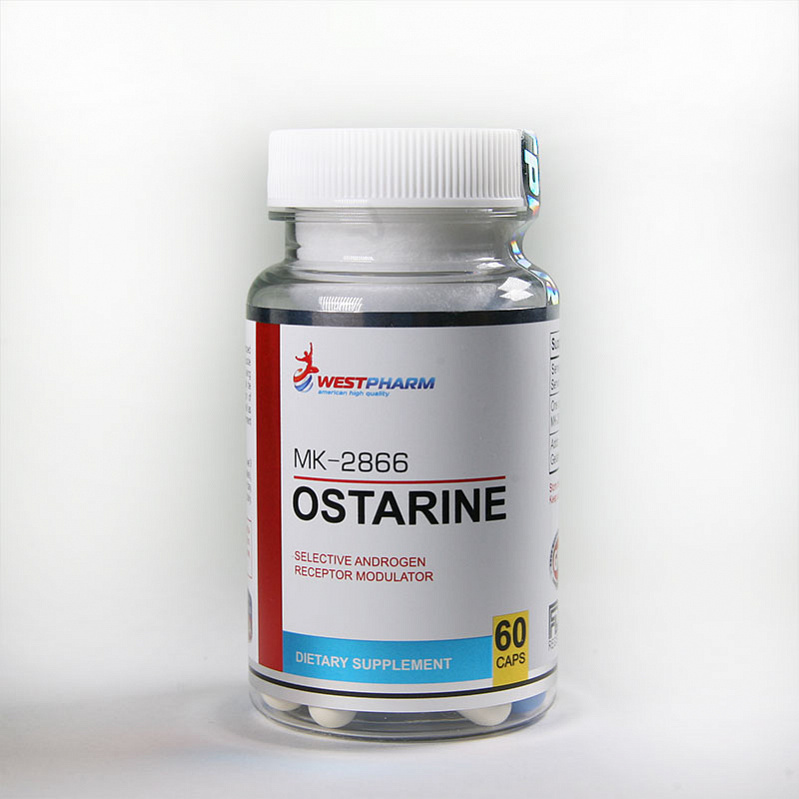
– Why not just use the more powerful Metribolone? –
Aside from the cash costs, the entire Methyltrene drug should include something like 25 mg per day of this product to even out the 100 mg ostarine intake per day. Significant liver toxicity begins to occur, as well as severe effects on lipid balance and androgen-sensitive tissues. By combining Osstarin instead of Methyltren it can be kept in much more reasonable doses. Indeed it MUST, otherwise the overlap of receptors on RA will inevitably be significant.
The only limitation of the ostarine-methyltrienolone stack would be:
- definitely lack of available AR receptors
- no anabolic agent without AR
Unfortunately, there is no particularly potent DS or PH in this area, as the prohormone market is moving towards AR and does not aromatize, as for commercial reasons (remember that all PH-DS are legally sold as supplements in Great Britain and many others in the US, therefore, in a market that tends to be less “hard for bodybuilding”), as for ease of use products that are no more than 5% smaller, AAS is already banned.
In the current situation, the third possible component of this stack may be the old Oxandrolone in the “cut” or the old BOLASTERONE, possibly in prohormonal form (see the next post)
In the peptide sector instead of inhibitors I believe that myostatin will actually start to grow when products for systemic use with a reasonable active life (not a few minutes) appear.
Other peptic products appear on the scene and are in full experiment


